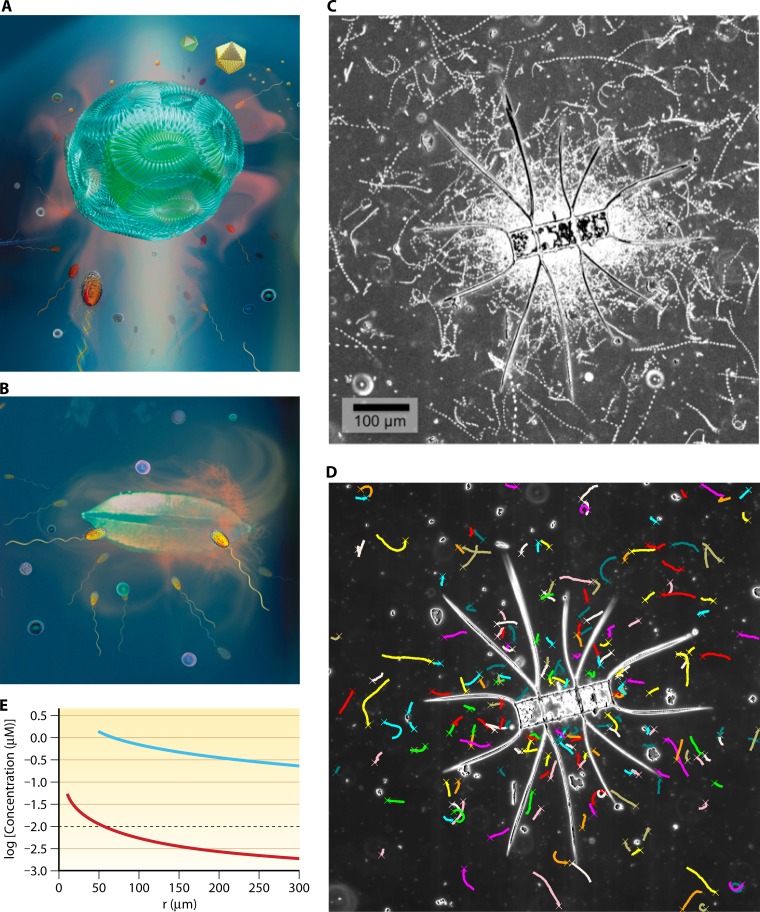Fig 2.
The phycosphere. (A and B) An artist's view of the diffusion boundary layer around individual phytoplankton cells. Motile bacteria can use chemotaxis to respond to the nutrient gradients associated with the enhanced dissolved organic matter concentrations within the phycosphere. Magnified from Fig. 1B. (C) Experimental observation of the phycosphere. A coastal seawater sample was collected via net tow to concentrate planktonic particles. The particles and entrained seawater were incubated for 24 h at 22°C, which enriched the bacterial community and stimulated motility. Settled particles were gently resuspended just prior to video capture via dark-field microscopy. The swimming trajectories shown here illustrate dense accumulations of chemotactic cells near the surface of an individual Chaetoceros diatom (S. Smriga and R. Stocker, unpublished). (D) Trajectories of individual bacteria in the same observation shown in panel C can be obtained using digital image analysis, here with an in-house automated algorithm that removes those shorter than 5 μm. This revealed a mean swimming speed of 25 μm/s. Crosses denote starting points of individual trajectories (S. Smriga, K. Son, and R. Stocker, unpublished). (E) Decay of DOM concentration with distance r from the center of a DOM-exuding phytoplankton. The curves refer to two phytoplankton radii, 10 μm (lower, red curve) and 50 μm (upper, blue curve). The black dashed line provides a reference to a bulk background concentration of 10 nM (typical of many organic solutes in the ocean). The DOM concentration field was obtained by solving the steady-diffusion equation for a constant source, following what was done by Seymour et al. (175). The phytoplankton cell was assumed to have a 100 mM internal concentration and to exude 100% of its daily production of the solute. This upper limit of the exudation rate is most applicable to stressed or senescent cells. The diffusion coefficient for the solute was 7.2 × 10−10 m2/s, consistent with values for many organic substrates, such as DMSP.

